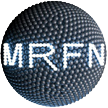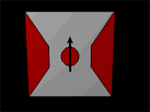Smart Apex Single Crystal Diffractometer is a dedicated instrument for Crystallography studies (absolute structure determination using a single crystal sample). This instrument delivers intense, monochromatic beam of Mo Kalpha radiation (0.7107 Å) produced using Graphite monochromator from a sealed Mo X-ray tube and collimated with a pinhole collimator.



